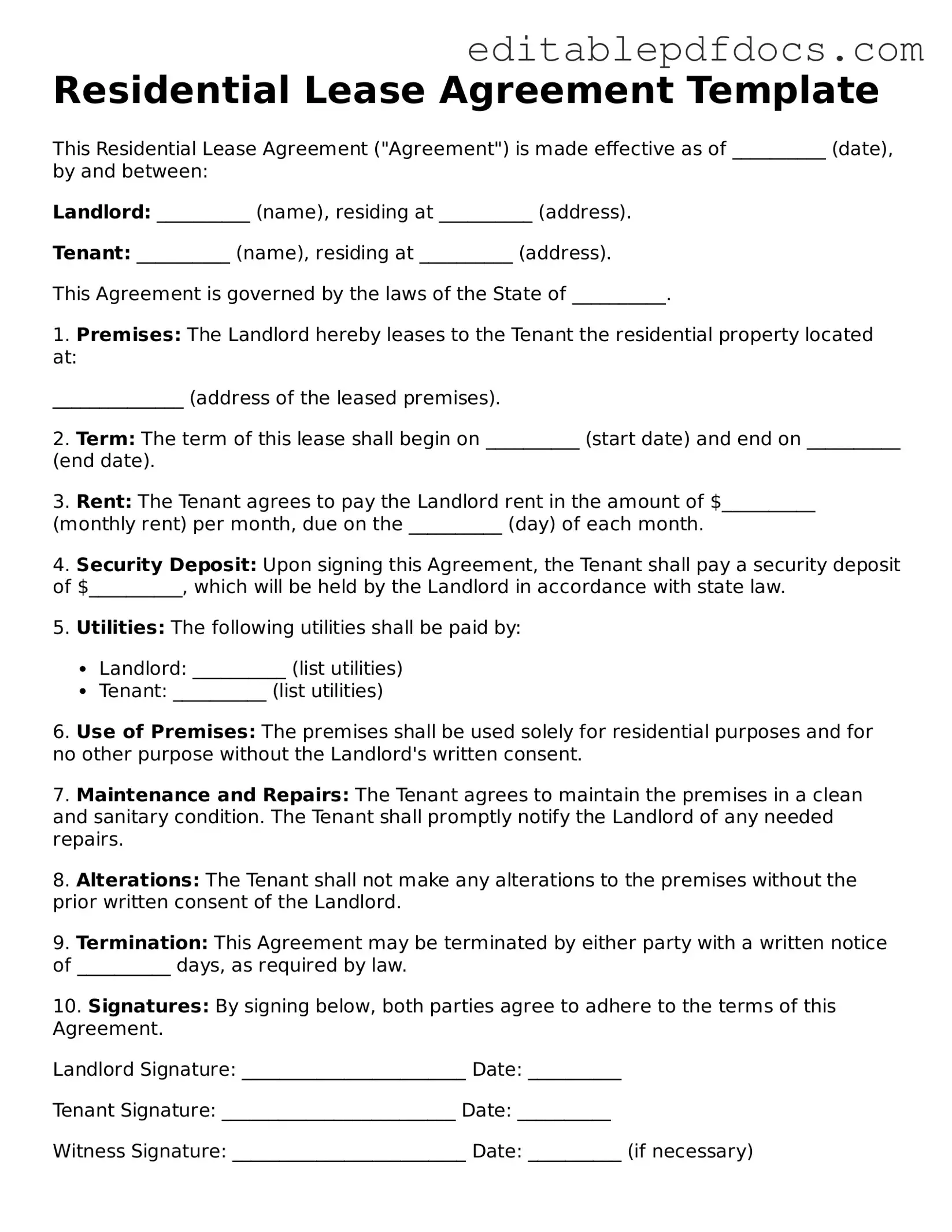Filling out a Residential Lease Agreement can seem straightforward, but many people make common mistakes that can lead to complications down the line. One frequent error is failing to provide accurate information about the rental property. This includes the address and specific unit number. Inaccurate details can create confusion and may affect the enforceability of the lease.
Another common mistake is neglecting to include all necessary parties in the agreement. If there are multiple tenants, all names should be listed. Omitting a tenant can lead to disputes about responsibilities and obligations under the lease.
Many individuals overlook the importance of clearly defining the lease term. Whether it’s a month-to-month agreement or a fixed-term lease, specifying the start and end dates is crucial. This information helps prevent misunderstandings regarding the duration of the tenancy.
Additionally, some people fail to read the fine print regarding security deposits. The amount of the deposit, the conditions for its return, and any deductions must be clearly stated. Not addressing these details can lead to disputes when the tenant moves out.
Another mistake involves not outlining the rules regarding pets. If pets are allowed, the lease should specify any restrictions, such as breed or size limitations. Conversely, if pets are prohibited, this should be clearly stated to avoid any confusion later on.
In some cases, individuals neglect to include provisions for maintenance and repairs. Clearly outlining the responsibilities of both the landlord and tenant can help ensure that issues are addressed promptly and fairly.
Lastly, many overlook the importance of including a clause about early termination. Life can be unpredictable, and having a clear understanding of the conditions under which a tenant can terminate the lease early can save both parties from potential legal issues in the future.
